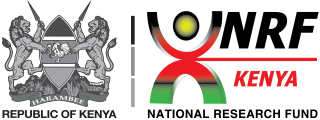Browsing by Author "Gitao, George C."
Now showing 1 - 1 of 1
Results Per Page
Sort Options
Publication Camel health management and pastoralists’ knowledge and information on zoonoses and food safety risks in Isiolo County, Kenya(springer, 2017) Lamuka, Peter Obimbo; Njeruh, Francis M.; Gitao, George C.; Abey, Khalif A.Camel health management has implications for public health and camel product trade. After liberalization of the veterinary service, current camel health management in the arid and semi-arid lands (ASALS) of Kenya and its implications for public health is not known. This study investigated camel health management and its implications on zoonoses and food safety in Isiolo County, Kenya. Semi-structured questionnaires were administered to 150 households, 15 agro-veterinary shops, 15 community-based animal health workers (CBAHWs) and 10 veterinary officers to collect information on camel health management. The main occupation and source of household income for the pastoral communities is camel-keeping (45.3%). Pastoralists self-medicate camels and other livestock (45.8%), which can lead to between over-dosing, under-dosing or wrong drug use. The CBAHWs, traditional animal health service providers (TAHSPs), government veterinary officers and private veterinary officers play a minimum role. Private veterinary services have not taken root in the ASALs. The sources of knowledge and information on the veterinary drug to use are experience (57.4%), non-governmental organizations (NGO) (41.1%) or CBAHWs (32.1%). The majority of pastoralists (72.5%) do not keep camel or other livestock treatment records. The constraints in purchasing veterinary drugs are expensive drugs, accessibility to drugs and availability of money. Pastoralists refer to veterinary drugs by their brand names but not by active ingredients. As reported by pastoralists, focus group discussion and key informant interviews, antibiotics used were adamycine (33.3%), ampicilline (26.7%), penicillin (14.4%), tetracycline (12.2%), amoxylin (11.1%) and penstrip (2.2%). The common camel diseases were trypanosomiasis, brucellosis, mastitis, diarrhoea, worm infestation, camel pox and tuberculosis. The public health risk factors were the presence of veterinary drug residues in camel products and development of resistant zoonotic organisms/diseases. It was concluded that current camel health management has serious implications for public health and food safety, and hence the camel product trade.
